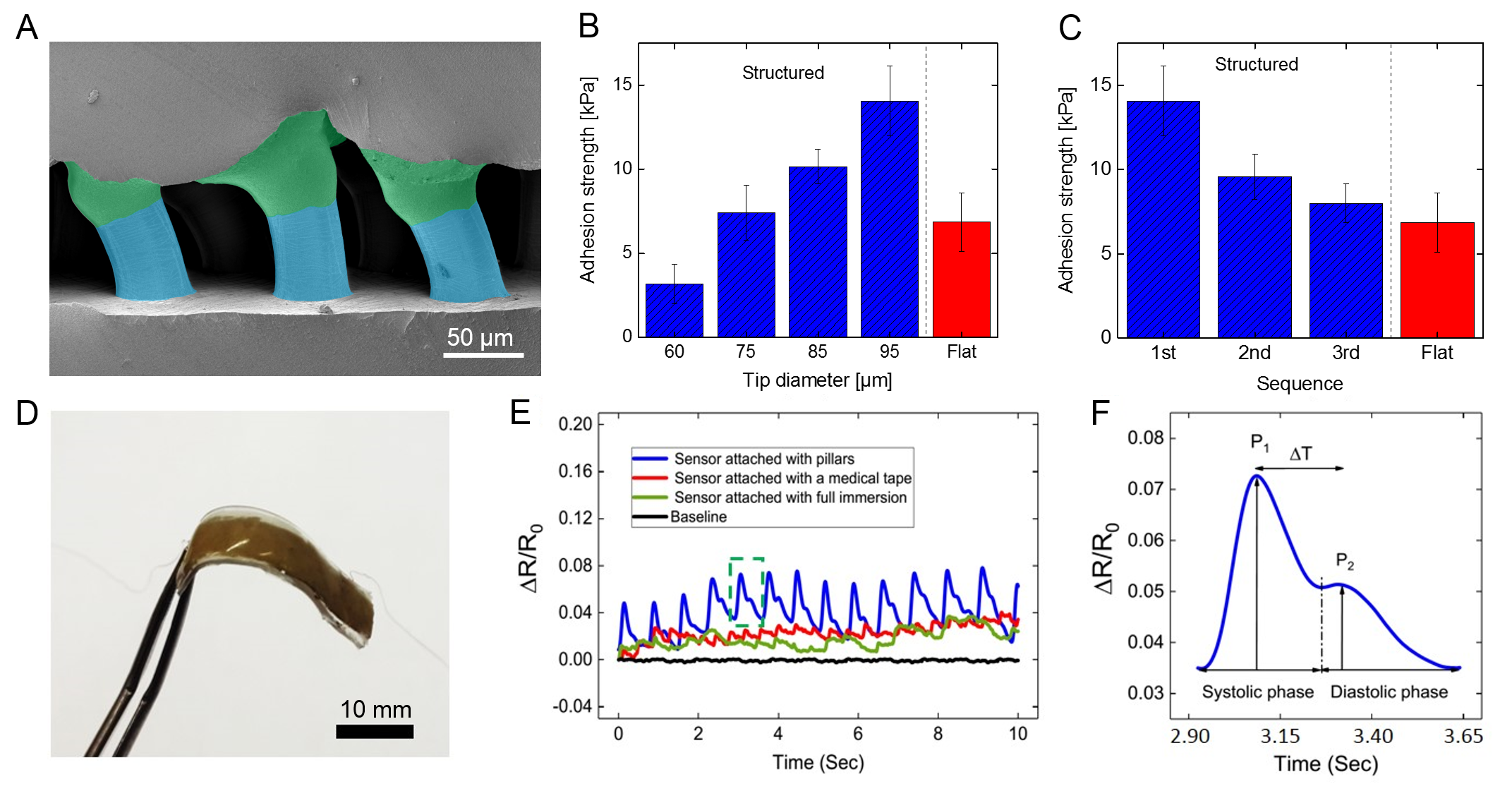
A) Scanning electron microscope side-view image the skin adhesive film attached to a skin replica. B) Adhesion of adhesive films with different vinyl siloxane tip diameters and C) adhesion after multiple inking and attachment process. D) Photograph of a highly flexible strain sensor on an adhesive film. E) Output signal of the strain sensor mounted onto the wrist. F) Response of the strain sensor during one cardiac cycle.
Considerable attention is being paid to wearable medical systems owing to their seamless integration with the human body, allowing continuous monitoring of important vital signs, such as respiratory and heart rate and greatly assists early diagnosis of diseases and subsequent therapy. Despite remarkable advances have been made in wearable medical devices, their conformal attachment to the rough and soft texture of the skin remains a grand challenge.
Herein, we propose a facile method for superior conformation and adhesion of bioinspired composite microfibers to the hierarchical topography of the skin [ ]. The soft and stretchable skin-adhesive films are composed of poly(dimethylsiloxane) microfibers decorated with conformal and mushroom-shaped vinylsiloxane tips. Direct crosslinking of the viscous tips on the skin surface can greatly enhance the skin adhesion through their excellent shape conformation. High adhesion strength of 18 kPa is achieved after optimizing the pattern geometries and processing parameters. The reusability of our adhesive films was tested by multiple inking and attachment process.
We demonstrated our skin-adhesive films as a wearable device application by integrating them with flexible strain sensors. Silver nanoparticle thin film based strain sensors were fabricated on the top of the micropatterned PDMS films. The ultrahigh gage factor of the strain sensor (ca. 767) together with strong bonding to the skin enables recording of the blood-flow pressure with improved signal-to-noise ratio of 59.7. The response of the skin-adhesive sensor clearly indicates the waveform pattern of the artery pulse. Furthermore, both systolic and diastolic phases and peaks were successfully identified.
Strong skin adhesion combined with signal amplification of advanced wearable systems may improve noise-free, sensitive, and accurate monitoring of body signals.
